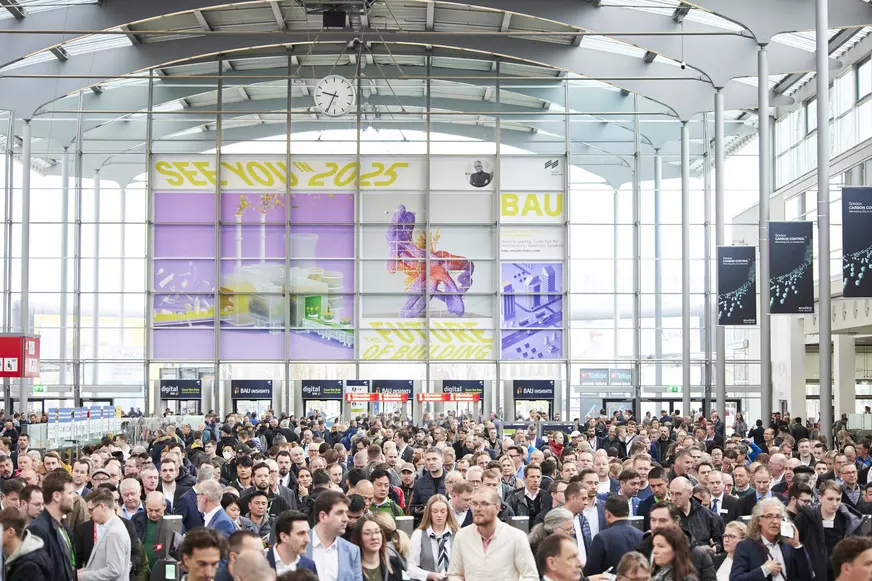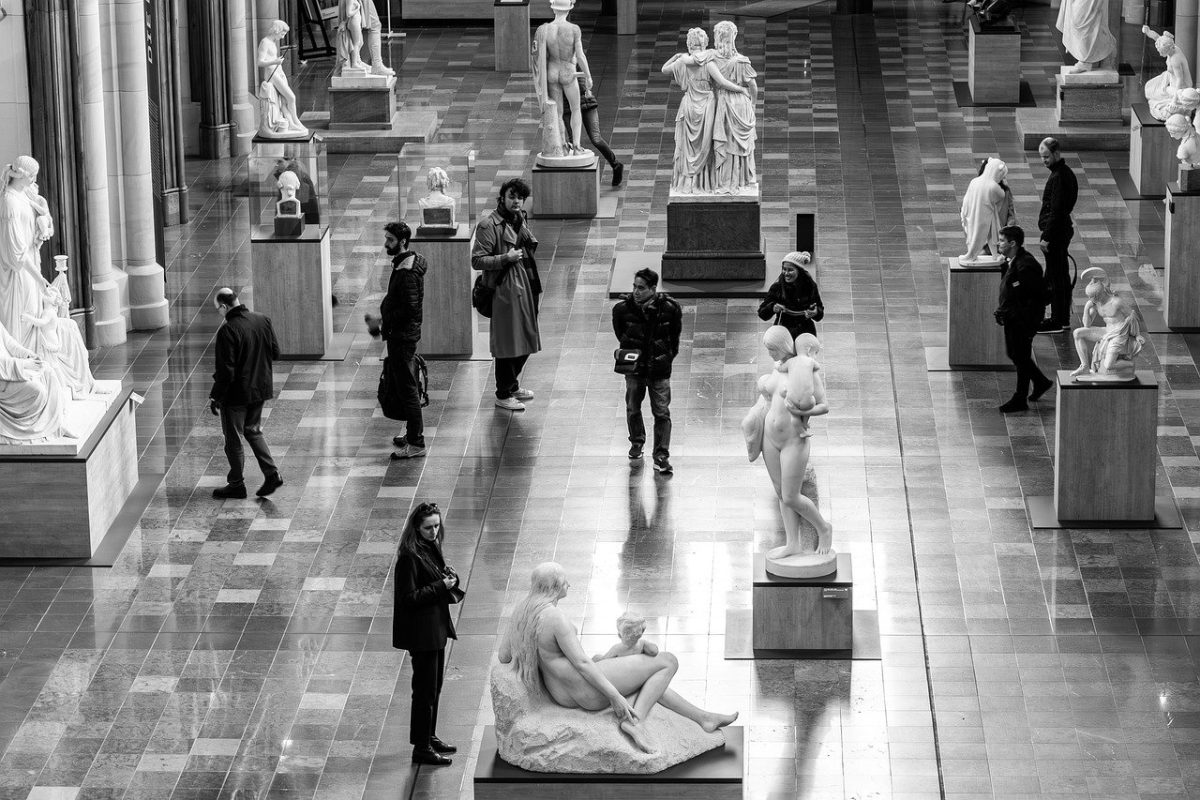
Latest NEWS
Preserving the Past, Shaping the Future: Unveiling the Top 5 Key Trends at denkmal Leipzig 2024

Denkmal Leipzig 2024: Exploring the Latest Trends in Heritage Preservation and Restoration Techniques
Preserving the Past, Shaping the Future: Unveiling the Top 5 Key Trends at denkmal Leipzig 2024
Denkmal Leipzig 2024: Exploring the Latest Trends in Heritage Preservation and Restoration Techniques

1. Digital Documentation and Visualization
One of the most significant trends in heritage preservation is the use of digital documentation and visualization techniques. With the advent of advanced technologies such as 3D scanning and photogrammetry, it is now possible to create highly accurate digital replicas of historical sites and artifacts. These digital models not only serve as valuable records but also enable researchers and conservationists to study and analyze them in great detail. Furthermore, virtual reality and augmented reality technologies allow visitors to experience these heritage sites in a whole new way, bridging the gap between the past and the present.
2. Sustainable Restoration Practices
In recent years, there has been a growing emphasis on sustainable restoration practices. Traditional restoration methods often involve the use of harmful chemicals and materials that can have a detrimental impact on the environment. However, at denkmal Leipzig 2024, a range of innovative and eco-friendly restoration techniques were showcased. From the use of biodegradable materials to the implementation of energy-efficient systems, these practices not only preserve our cultural heritage but also contribute to a greener and more sustainable future.
3. Community Engagement and Participation
Preserving our cultural heritage is not a task that can be accomplished by a few experts alone. It requires the active participation and engagement of the local community. At denkmal Leipzig 2024, community involvement was a key focus. Various projects and initiatives were presented, highlighting the importance of engaging local residents in the preservation and restoration process. By involving the community, not only do we ensure the long-term sustainability of these heritage sites, but we also foster a sense of ownership and pride among the people.
4. Adaptive Reuse and Repurposing
As our cities continue to grow and evolve, the challenge of preserving historic buildings becomes even more critical. Adaptive reuse and repurposing have emerged as effective strategies to address this challenge. At denkmal Leipzig 2024, numerous examples of successful adaptive reuse projects were showcased. From transforming old factories into vibrant cultural centers to converting historic buildings into sustainable housing, these projects demonstrate the potential of repurposing heritage structures to meet the needs of the present while preserving their historical significance.
5. International Collaboration and Knowledge Exchange
Preserving our cultural heritage is a global endeavor that requires collaboration and knowledge exchange. At denkmal Leipzig 2024, international experts and professionals from various fields came together to share their experiences and insights. This exchange of ideas and expertise not only enriches our understanding of heritage preservation but also fosters a sense of global responsibility. By learning from each other’s successes and challenges, we can develop more effective strategies and approaches to preserve our shared cultural heritage.
In conclusion, denkmal Leipzig 2024 has unveiled a range of key trends in heritage preservation and restoration techniques. From digital documentation and sustainable restoration practices to community engagement and adaptive reuse, these trends are shaping the future of cultural heritage preservation. By embracing these trends, we can ensure that our past is not only preserved but also becomes a source of inspiration for future generations.
Sustainable Architecture and Building Materials: Innovations at denkmal Leipzig 2024
Preserving the Past, Shaping the Future: Unveiling the Top 5 Key Trends at denkmal Leipzig 2024
Sustainable Architecture and Building Materials: Innovations at denkmal Leipzig 2024
In recent years, the importance of sustainable architecture and building materials has gained significant attention. As the world grapples with the challenges of climate change and environmental degradation, it has become imperative to find innovative solutions that minimize the impact of construction on the planet. At denkmal Leipzig 2024, the leading trade fair for heritage preservation, several key trends in sustainable architecture and building materials have emerged, offering a glimpse into the future of the industry.
First and foremost, the use of recycled and upcycled materials has become increasingly prevalent in sustainable architecture. Designers and architects are now exploring creative ways to repurpose materials that would otherwise end up in landfills. From reclaimed wood to recycled glass, these materials not only reduce waste but also add a unique aesthetic to buildings. At denkmal Leipzig 2024, numerous exhibitors showcased their innovative use of recycled and upcycled materials, demonstrating that sustainability and style can go hand in hand.
Another trend that has gained traction is the integration of renewable energy systems into buildings. With the advancement of technology, it is now possible to harness the power of the sun, wind, and water to generate clean energy. Solar panels, wind turbines, and hydroelectric systems are being seamlessly incorporated into the design of buildings, reducing their reliance on fossil fuels. This not only helps to mitigate climate change but also lowers energy costs for building owners. At denkmal Leipzig 2024, visitors were able to witness firsthand the potential of renewable energy systems in heritage preservation.
Furthermore, the concept of passive design has become increasingly popular in sustainable architecture. Passive design focuses on maximizing natural resources, such as sunlight and ventilation, to reduce the need for artificial heating, cooling, and lighting. By strategically positioning windows, using thermal insulation, and incorporating shading devices, buildings can maintain comfortable temperatures without excessive energy consumption. At denkmal Leipzig 2024, architects and designers showcased their expertise in passive design, highlighting its effectiveness in heritage buildings.
In addition to sustainable materials and energy systems, water conservation has also emerged as a key trend in sustainable architecture. With water scarcity becoming a pressing issue in many parts of the world, it is crucial to develop strategies that minimize water consumption in buildings. At denkmal Leipzig 2024, exhibitors presented innovative solutions such as rainwater harvesting systems, greywater recycling, and low-flow fixtures. These technologies not only reduce water waste but also contribute to the overall sustainability of buildings.
Lastly, the concept of circular economy has gained significant attention in the field of sustainable architecture. The circular economy aims to minimize waste and maximize resource efficiency by promoting the reuse, repair, and recycling of materials. At denkmal Leipzig 2024, exhibitors showcased their commitment to the circular economy by presenting innovative solutions for deconstruction and material recovery. By adopting a circular approach, the construction industry can significantly reduce its environmental footprint and contribute to a more sustainable future.
In conclusion, denkmal Leipzig 2024 has unveiled several key trends in sustainable architecture and building materials. From the use of recycled and upcycled materials to the integration of renewable energy systems, these trends offer a glimpse into the future of the industry. By embracing sustainable practices, the construction industry can play a crucial role in preserving the past while shaping a more sustainable future.
Digitalization in Cultural Heritage Conservation: Key Insights from denkmal Leipzig 2024
Preserving the Past, Shaping the Future: Unveiling the Top 5 Key Trends at denkmal Leipzig 2024
Digitalization in Cultural Heritage Conservation: Key Insights from denkmal Leipzig 2024
In the ever-evolving world of cultural heritage conservation, digitalization has emerged as a powerful tool for preserving the past and shaping the future. At the recent denkmal Leipzig 2024 conference, experts from around the world gathered to discuss the latest trends and advancements in this field. Here, we unveil the top 5 key trends that emerged from the conference, shedding light on the transformative power of digitalization in cultural heritage conservation.
First and foremost, the conference highlighted the increasing use of 3D scanning and modeling in cultural heritage conservation. This technology allows for the creation of highly accurate digital replicas of historical sites, artifacts, and structures. By capturing every intricate detail, 3D scanning and modeling not only aids in documentation but also enables virtual exploration and analysis. This trend is revolutionizing the way we interact with cultural heritage, allowing for immersive experiences that transcend physical limitations.
Another key trend discussed at denkmal Leipzig 2024 was the integration of augmented reality (AR) and virtual reality (VR) in cultural heritage conservation. AR and VR technologies offer unique opportunities for engagement and education. Visitors can now step into the past and experience historical events firsthand through virtual reconstructions. These technologies also enable the visualization of lost or damaged heritage, providing a glimpse into what once was. By bridging the gap between the present and the past, AR and VR are transforming the way we perceive and appreciate cultural heritage.
The conference also shed light on the growing importance of digital documentation and archiving in cultural heritage conservation. With the advancement of digital technologies, it has become easier than ever to capture and store vast amounts of data. This wealth of information not only aids in research and analysis but also serves as a valuable resource for future generations. Digital documentation and archiving ensure that cultural heritage is preserved in a digital format, safeguarding it from physical deterioration or loss.
Furthermore, denkmal Leipzig 2024 highlighted the role of artificial intelligence (AI) in cultural heritage conservation. AI algorithms can analyze vast amounts of data and identify patterns, enabling researchers to gain new insights into historical artifacts and structures. This technology also aids in the restoration and conservation process, as AI algorithms can predict the effects of different interventions and guide decision-making. By harnessing the power of AI, cultural heritage conservationists can make more informed and efficient choices, ensuring the preservation of our shared history.
Last but not least, the conference emphasized the importance of collaboration and knowledge sharing in the digital age. Digitalization has made it easier than ever for experts from different fields and regions to connect and collaborate. Through online platforms and virtual conferences, professionals in cultural heritage conservation can exchange ideas, share best practices, and learn from one another. This global network of knowledge and expertise is instrumental in advancing the field and ensuring the preservation of cultural heritage for future generations.
In conclusion, denkmal Leipzig 2024 provided valuable insights into the key trends shaping the future of cultural heritage conservation through digitalization. From 3D scanning and modeling to augmented reality and artificial intelligence, these technologies are revolutionizing the way we interact with and preserve our shared history. Furthermore, digital documentation and archiving, as well as collaboration and knowledge sharing, are essential components of this transformative process. As we continue to embrace digitalization, we must harness its power to preserve the past and shape a future where cultural heritage is cherished and celebrated.
Heritage Tourism and Cultural Experiences: Highlights from denkmal Leipzig 2024
Preserving the Past, Shaping the Future: Unveiling the Top 5 Key Trends at denkmal Leipzig 2024
Heritage tourism and cultural experiences have always been a significant part of our society. They allow us to connect with our past, understand our roots, and shape our future. In this article, we will explore the top five key trends that were unveiled at denkmal Leipzig 2024, a renowned event that showcases the latest developments in heritage preservation and cultural experiences.
First and foremost, one of the most prominent trends at denkmal Leipzig 2024 was the integration of technology in heritage tourism. With the advent of virtual reality and augmented reality, visitors can now immerse themselves in historical settings and experience the past like never before. From virtual tours of ancient ruins to interactive exhibits in museums, technology is revolutionizing the way we engage with our heritage.
Another significant trend that emerged at denkmal Leipzig 2024 was the emphasis on sustainability in heritage preservation. As we become more aware of the environmental impact of our actions, it is crucial to find sustainable solutions for preserving our cultural heritage. From eco-friendly restoration techniques to energy-efficient lighting systems in historical buildings, sustainability is now a key consideration in heritage preservation projects.
Furthermore, denkmal Leipzig 2024 showcased the growing importance of community engagement in heritage tourism. Instead of being passive observers, visitors are now encouraged to actively participate in preserving and promoting their local heritage. This can range from volunteering in restoration projects to organizing community events that celebrate cultural traditions. By involving the community, heritage tourism becomes a collaborative effort that fosters a sense of ownership and pride.
In addition to community engagement, denkmal Leipzig 2024 highlighted the significance of inclusivity in heritage tourism. It is essential to ensure that everyone, regardless of their background or abilities, can access and enjoy cultural experiences. This includes making heritage sites and museums more accessible for people with disabilities, providing multilingual information, and incorporating diverse narratives in the interpretation of history. Inclusivity not only enriches the visitor experience but also promotes a more inclusive and equitable society.
Last but not least, denkmal Leipzig 2024 shed light on the growing trend of digital preservation. As our world becomes increasingly digital, it is crucial to find ways to preserve our digital heritage. From archiving websites and social media platforms to digitizing historical documents and photographs, digital preservation allows us to safeguard our cultural heritage for future generations. This trend also opens up new possibilities for research, education, and the democratization of knowledge.
In conclusion, denkmal Leipzig 2024 unveiled several key trends in heritage tourism and cultural experiences. From the integration of technology to the emphasis on sustainability, community engagement, inclusivity, and digital preservation, these trends are shaping the future of heritage preservation. By embracing these trends, we can ensure that our past is preserved, our present is enriched, and our future is shaped by a deep understanding and appreciation of our cultural heritage.
Conservation and Management of Historic Sites: Key Discussions at denkmal Leipzig 2024
Preserving the Past, Shaping the Future: Unveiling the Top 5 Key Trends at denkmal Leipzig 2024
Conservation and Management of Historic Sites: Key Discussions at denkmal Leipzig 2024
The preservation and management of historic sites have always been crucial in maintaining our cultural heritage. At denkmal Leipzig 2024, one of the world’s leading trade fairs for heritage preservation, experts and enthusiasts gathered to discuss the latest trends and challenges in this field. In this article, we will unveil the top five key trends that emerged from these discussions, shedding light on the future of conservation and management of historic sites.
First and foremost, sustainability has become a central focus in the preservation of historic sites. With the growing awareness of environmental issues, there is a pressing need to adopt sustainable practices in the management of these sites. This includes using eco-friendly materials for restoration, implementing energy-efficient systems, and promoting sustainable tourism. The discussions at denkmal Leipzig 2024 emphasized the importance of integrating sustainability into every aspect of heritage preservation.
Secondly, digitalization has revolutionized the way we approach the conservation and management of historic sites. The use of advanced technologies such as 3D scanning, virtual reality, and augmented reality has opened up new possibilities for documentation, interpretation, and visitor engagement. Experts at denkmal Leipzig 2024 highlighted the potential of these digital tools in enhancing the understanding and appreciation of historic sites, as well as in facilitating remote access for research and education purposes.
Furthermore, community engagement has emerged as a key trend in the conservation and management of historic sites. Recognizing the importance of involving local communities in decision-making processes, experts at denkmal Leipzig 2024 emphasized the need for participatory approaches. This includes engaging community members in the planning and implementation of preservation projects, as well as fostering a sense of ownership and pride in their cultural heritage. The discussions highlighted the positive impact of community involvement in ensuring the long-term sustainability of historic sites.
In addition, the preservation of intangible heritage has gained significant attention in recent years. While physical structures and artifacts are important, the intangible aspects of cultural heritage, such as traditional knowledge, rituals, and practices, are equally valuable. At denkmal Leipzig 2024, experts discussed the challenges and opportunities in safeguarding intangible heritage, including the need for documentation, transmission, and revitalization. The discussions emphasized the importance of recognizing and preserving these intangible elements as an integral part of our cultural identity.
Lastly, the impact of climate change on historic sites has become a pressing concern. Rising sea levels, extreme weather events, and changing environmental conditions pose significant threats to these vulnerable sites. At denkmal Leipzig 2024, experts highlighted the need for climate resilience strategies in the preservation and management of historic sites. This includes implementing adaptive measures to protect against flooding, erosion, and other climate-related risks. The discussions emphasized the importance of integrating climate change considerations into heritage preservation policies and practices.
In conclusion, denkmal Leipzig 2024 provided a platform for experts and enthusiasts to explore the latest trends and challenges in the conservation and management of historic sites. The discussions unveiled five key trends that are shaping the future of this field: sustainability, digitalization, community engagement, preservation of intangible heritage, and climate resilience. These trends highlight the evolving nature of heritage preservation and the need for innovative approaches to ensure the long-term sustainability of our cultural heritage. As we strive to preserve the past, we must also shape the future by embracing these trends and adapting to the changing needs and demands of our society.




